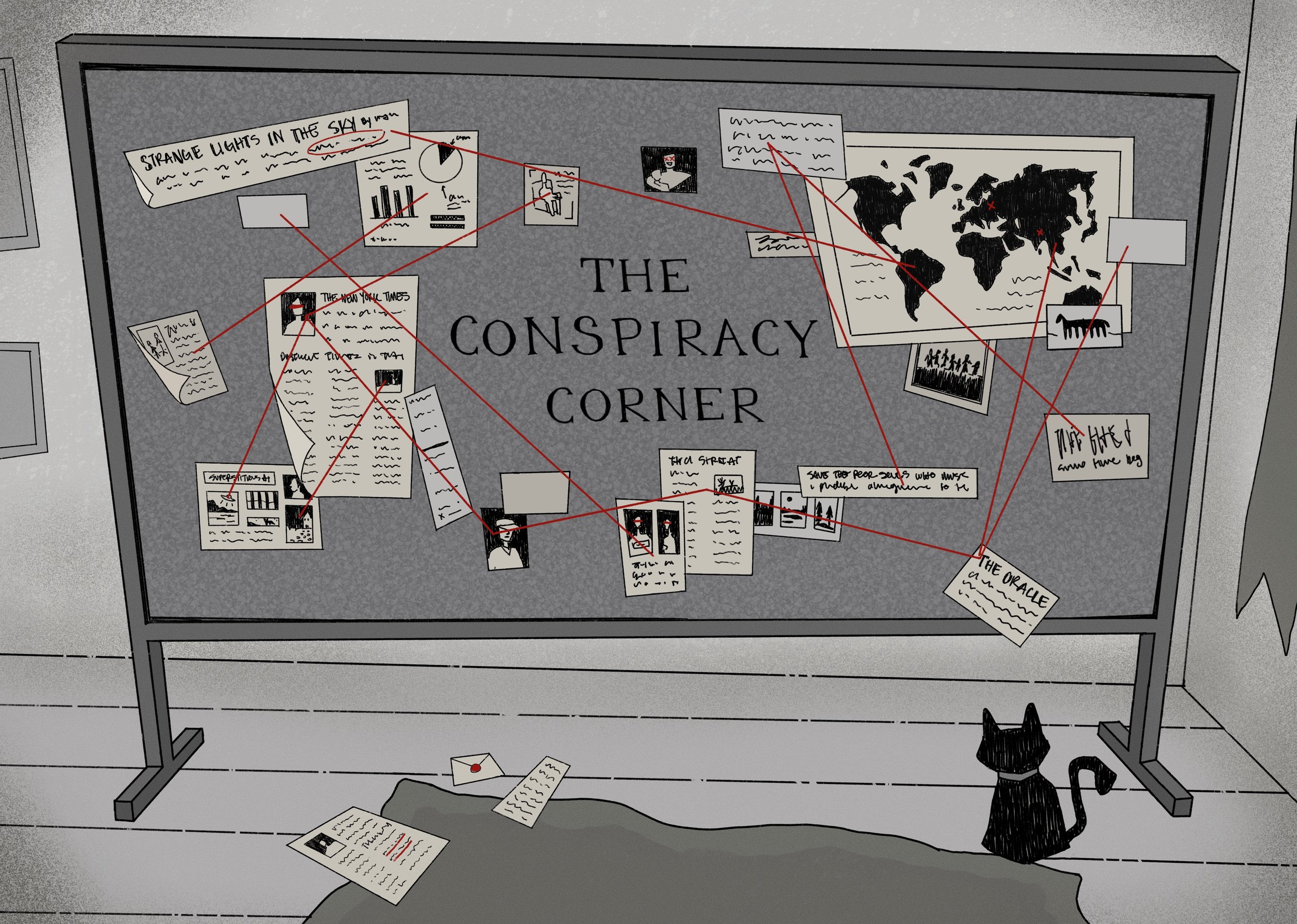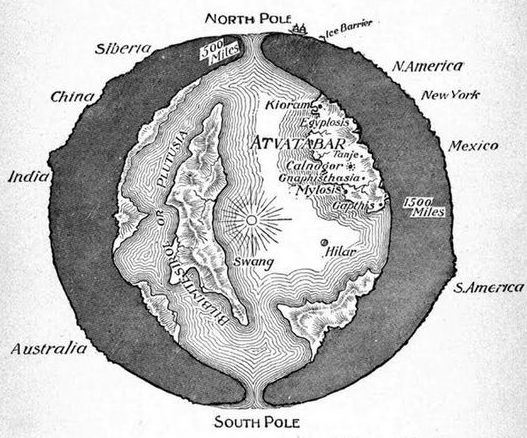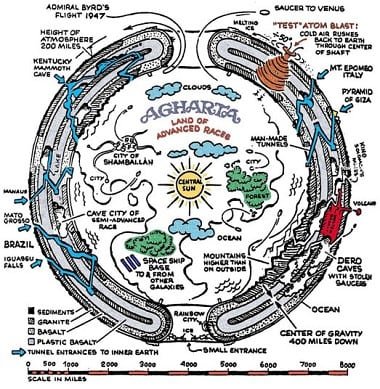The Hollow Earth Theory and Mount Rushmore’s Secret Room
By Arman Manternach ‘23
Note from the author: Angie Nguyen’s art is featured throughout this article! Be sure to check out her portfolio on Instagram for more amazing art: https://www.instagram.com/leek.a.lot/
Art courtesy of Angie Nguyen
A Hollow Earth
A consistent theme in the mythology of ancient cultures is the belief that another world exists beneath our feet. Within Buddhism, for example, legends tell of Agartha, a secret subterranean world inhabited by an advanced humanoid species.
Different cultures have different names for the same concept. Hindus sometimes refer to it as Aryavartha, the Chinese call it Hsi Tien, and the Russian name for the civilization is Belovoyde. The most widely understood name for the secret world is its Sanskrit name, Shambhala.
The evidence for a hollow earth and a secret world within it goes beyond folklore. Some of the most renowned physicists and mathematicians in history have independently arrived at the conclusion that the earth is hollow and houses a secret civilization.
Edmond Halley, yes, the Halley’s comet Halley, was very interested in the structure of the inside of the earth. He cited Earth’s shifting magnetic field as evidence that the part of the earth that humans inhabited was just an outermost shell. He theorized that whatever was inside the earth was responsible for throwing off the magnetic field, and he believed that the ‘whatever’ was a secret civilization.
Years later, esteemed mathematician Leonhard Euler discovered that not only is the earth hollow, but the inner earth is actually accessible via entrances through thinner crust at the north and south poles. He furthered our understanding of the underground civilization, proposing continents, oceans, and a small sun at the center of the earth to warm the creatures.
Euler’s model. Image courtesy of Wikimedia Commons
One of the largest sources of information that we have about the subterranean world are the expeditions and journals of famous polar explorer and medal of honor recipient Admiral Richard Byrd. Byrd referred to a land beyond the North Pole called “the center of the great unknown” in his journals.
Admiral Byrd was able to perform a flyover of the North Pole in 1926, and he reported seeing areas of lush greenery where there should have been none. Eager to confirm that the poles were entrances to Agartha, three years later, in 1929, he flew over the South Pole, and in 1947, he organized Operation Highjump, which sought to establish a US training and research facility at the South Pole.
It was here, at the southern entrance to the inner earth, where admiral Byrd met a male humanoid from the inner earth named “master.” The creature told him that humanity’s elites had previously made contact with the inner earthers and there were entrances to the inner earth all over the world, not just at the poles. He named entrances under the Pyramids of Giza, Kentucky Mammoth cave, the Himalayas, and other extreme locations.
A more detailed illustration of the hollow earth. Image courtesy of Miro
Master also told Byrd that the inner earthers, using their human emissaries, had warned the governments of the world about the destructive capabilities of nuclear weapons, but that the governments had not heeded their warnings.
Admiral Byrd rushed home to recount his experience to President Truman and his superiors at the Pentagon but was surprised to learn that they already knew about the inner earth and its access points. After his report, he was detained and instructed never to speak about his discovery at the South Pole again.
Though the government silenced Admiral Byrd, the truth about the inner earth and Master’s message live on in his published diary.
Art courtesy of Angie Nguyen
Mount Rushmore’s Secret Room
Gutzon Borglum, the lead sculptor of Mount Rushmore, carved an 18-foot door behind Abraham Lincoln’s head that opens into a 75-foot long and 35-foot tall room called the Hall of Records.
Image courtesy of the National Parks Service
The US government claims the only things housed in the hall are a handful of important documents: the US Constitution, the Declaration of Independence, the Bill of Rights, a biography of Borglum, and biographies of the presidents depicted at Mount Rushmore.
Borglum, however, had intended the hall to house treasures representative of every era of American society, effectively providing a complete physical record of the country’s most important history, and he imagined that the hall might need to be expanded as the country aged.
Borglum’s untimely death at the end of the construction of the monument meant that he was not able to oversee the enactment of his vision, and the Hall of Records was turned over to the government, who hastily and inexplicably sealed the hall off with a 1,200 pound granite slab.
Image courtesy of the National Parks Service
The government is hiding something, and the two best guesses are the Twin Sisters, the pair of cannons that won the Texas Revolution at the Battle of San Jacinto and then vanished (now known as the holy grail of Texas), and the $3 million (98.25 million today) of American double eagle coins that were supposedly lost in a 1909 shipwreck off of Nantucket.
(More on the Twin Sisters; more on the lost Double Eagle coins)
The sealing of the Hall implies whatever is inside should not be destroyed but needs to be hidden away because of what could happen if it were to fall into the wrong hands, which has led to speculation over the years that among the important documents in the Hall are the exact instructions for the creation of the first atomic bomb.
Art courtesy of Angie Nguyen







